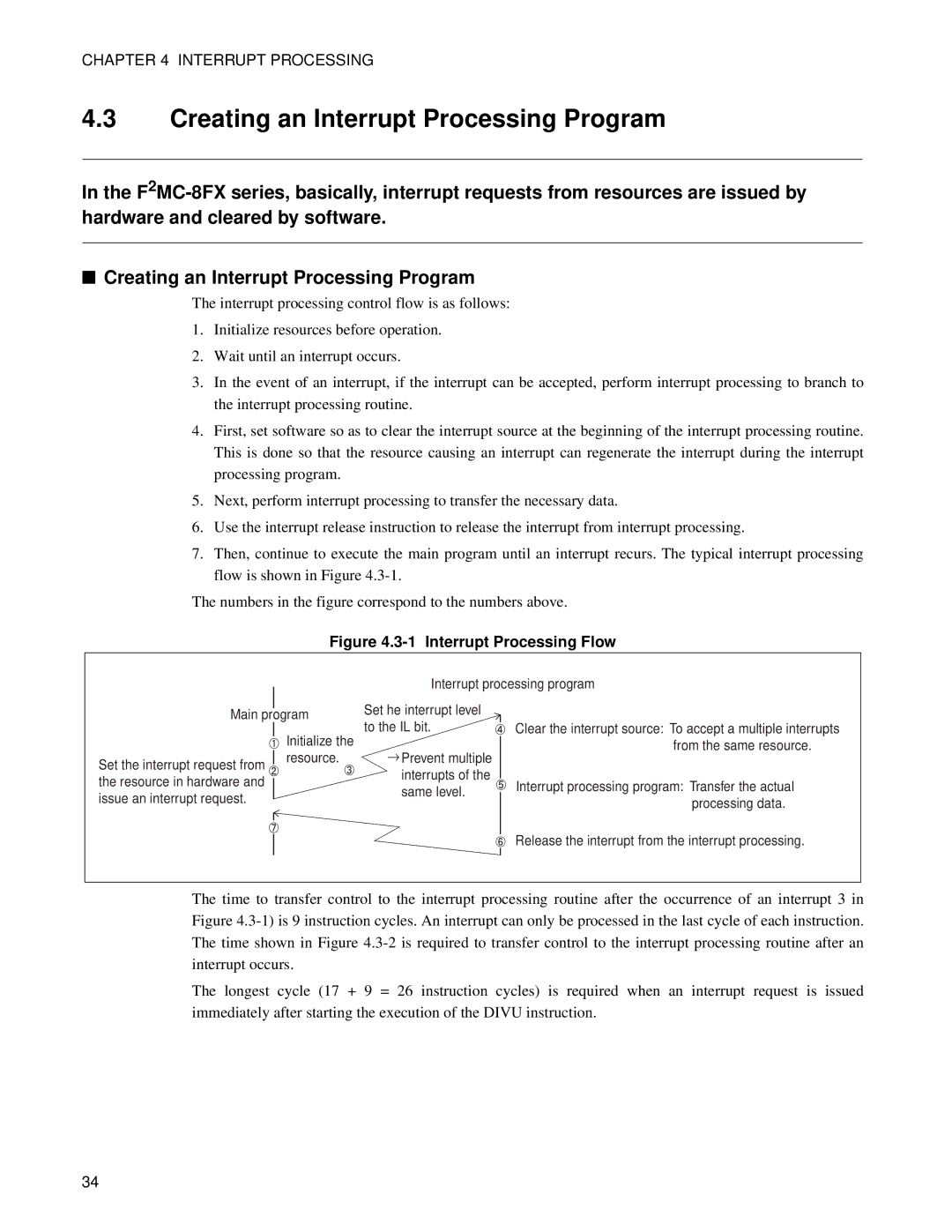
CHAPTER 4 INTERRUPT PROCESSING
4.3Creating an Interrupt Processing Program
In the
■Creating an Interrupt Processing Program
The interrupt processing control flow is as follows:
1.Initialize resources before operation.
2.Wait until an interrupt occurs.
3.In the event of an interrupt, if the interrupt can be accepted, perform interrupt processing to branch to the interrupt processing routine.
4.First, set software so as to clear the interrupt source at the beginning of the interrupt processing routine. This is done so that the resource causing an interrupt can regenerate the interrupt during the interrupt processing program.
5.Next, perform interrupt processing to transfer the necessary data.
6.Use the interrupt release instruction to release the interrupt from interrupt processing.
7.Then, continue to execute the main program until an interrupt recurs. The typical interrupt processing flow is shown in Figure
The numbers in the figure correspond to the numbers above.
Figure 4.3-1 Interrupt Processing Flow
Interrupt processing program
Main program
Set he interrupt level to the IL bit.
Clear the interrupt source: To accept a multiple interrupts
Set the interrupt request from the resource in hardware and issue an interrupt request.
Initialize the resource.
→Prevent multiple interrupts of the same level.
from the same resource.
Interrupt processing program: Transfer the actual processing data.
Release the interrupt from the interrupt processing.
The time to transfer control to the interrupt processing routine after the occurrence of an interrupt 3 in Figure
The longest cycle (17 + 9 = 26 instruction cycles) is required when an interrupt request is issued immediately after starting the execution of the DIVU instruction.
34
